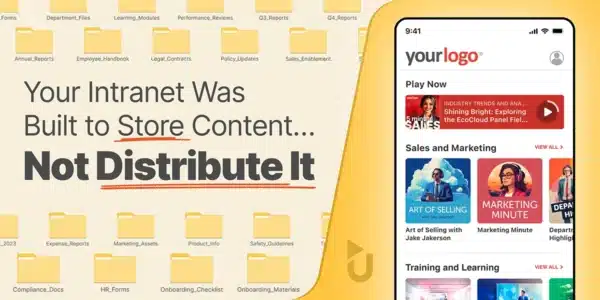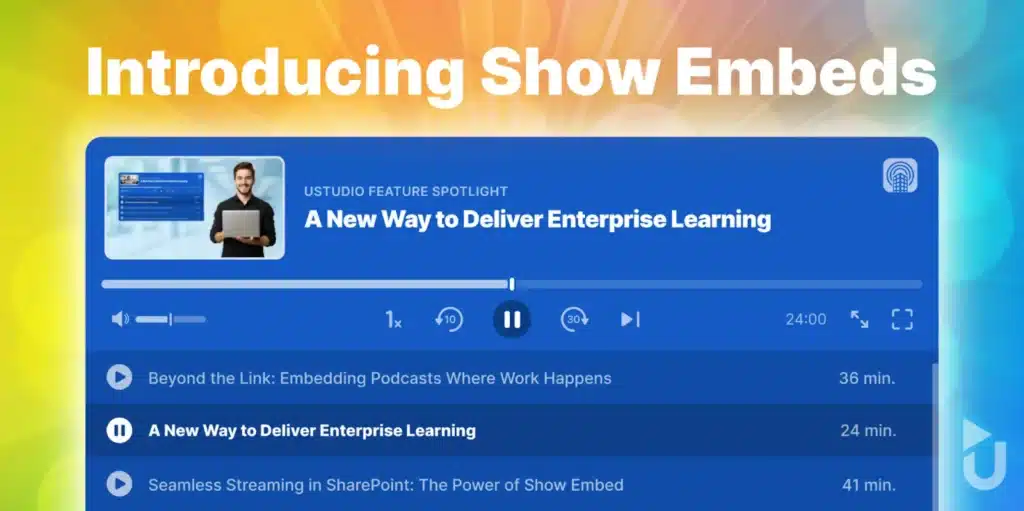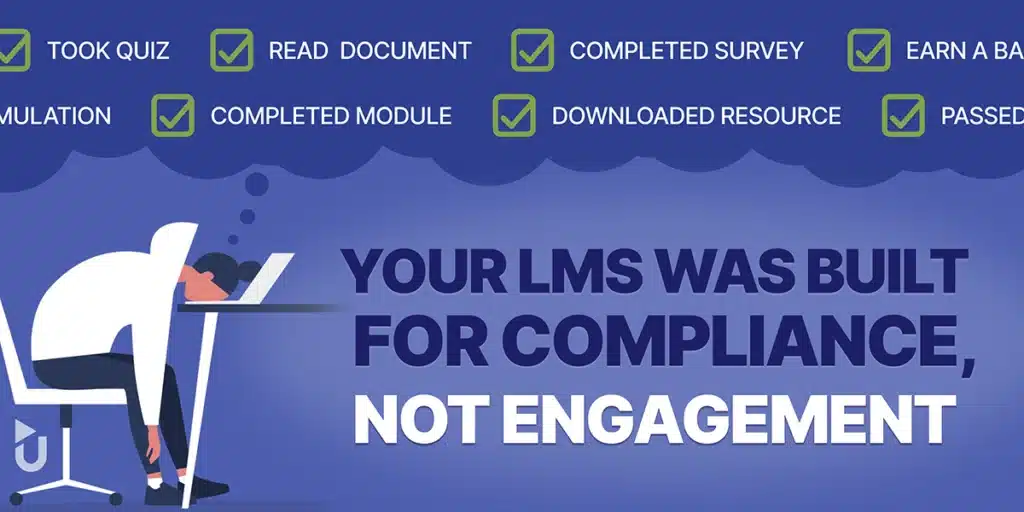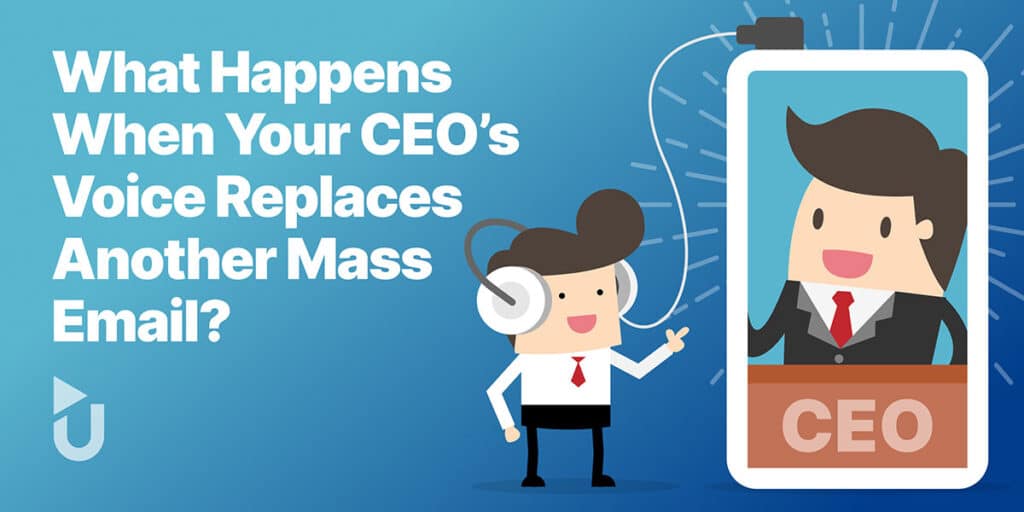Your Intranet Was Built to Store Content, Not Distribute It
Michael Wright - VP of Sales at uStudio | Blog, Internal Communications, Podcasting

The TLDR;
- SharePoint and other intranet platforms were designed for static file storage and access
- They are poor tools for distributing rich media content that employees will actually consume
- Unified internal media streaming platforms are solving the reach, access, and engagement problems intranets were never built to handle
- When employees can listen or watch on their own terms, content becomes habit not homework
Static Hubs Don’t Drive Dynamic Engagement
Enterprise communication today is messy. Employees are hybrid. Attention is fragmented. The average workday is a juggling act between meetings, apps, alerts, and deadlines.
And yet, most companies still treat SharePoint or intranet portals as their central communication hubs.
The reality is that SharePoint wasn’t built for content distribution. It was built for content storage. Upload a document, create a folder, grant access. Done.
But if your goal is to ensure employees actually engage with content, especially rich media like video updates, screen recordings, or internal podcasts, SharePoint falls short.
No notifications. No mobile-first experience. No usable analytics on what’s engaging.
Just a static wall of folders or an endless page scroll waiting for someone to click.
What We Commonly See Across Enterprises
Many large organizations have made significant investments in internal content creation, especially post-pandemic. Leadership updates, DEI programming, onboarding guides, sales training, product walkthroughs, culture videos, the list goes on.
But the distribution strategy is usually an afterthought. Content lives in an LMS, or buried in an intranet. Or it’s emailed out and forgotten.
That content is valuable. But it’s not reaching people when or how they need it.
We’ve seen enterprises transform their communication reach by addressing both the content as well as the distribution. Format matters. Audio and video, mobile and desktop, online and offline. Personalized by role or department. Supporting multiple file, and more importantly, lifestyle formats, is the key to getting employees to engage in the message you are trying to deliver. Think mobile-first. Offline-capable. Push-based.
When employees receive the right content in the right format at the right time, everything changes.
This isn’t really a surprise to most enterprises. Consumer engagement of content always leads the adoption curve. It’s just that your Intranet is about as far away from your employees' content consumption preferences as it gets.
Why SharePoint Often Fails at Media Delivery
Let’s be clear. We’re not throwing shade on SharePoint or other Intranet systems. They are excellent for what it was designed to do, manage documents, organize resources, and provide a permissions-based file structure.
But when used as a distribution platform, it creates friction at every step.
- They have to remember where the content lives and manually search for it
- There’s no notification or nudge to let them know something new is available
- When they do find it, the media playback is slow to load or doesn’t work on their device
- If they’re on mobile or offline, access is inconsistent or unavailable
- Even after consuming the content, there’s no clear way to give feedback or signal that it was helpful
If your goal is to make it easy for employees to absorb content passively, in the flow of work or while on the go, SharePoint likely isn’t going to cut it.
What Modern Distribution Looks Like
Modern internal communication platforms focus on delivery, not just storage. They let you push content to specific roles or audiences. They make it mobile and offline friendly. They surface analytics that help you iterate and improve.
And most importantly, they support multiple formats.
- Audio for leadership updates or win stories.
- Video for executive comms or onboarding modules.
- Screen recordings for product demos or sales enablement.
It’s not just about podcasting. It’s about creating a unified internal media experience that meets employees where they are.
Some companies start with internal podcasts because they’re easy to create and quick to deploy. But they quickly expand into broader media use cases once they see the engagement lift.
It’s Not About Replacing SharePoint. It’s About Redesigning the Experience
Now let’s address the elephant in the room, for many teams SharePoint isn’t going anywhere and is already a central part of your internal communications stack.The good news is you do not have to abandon it. In fact, one of the fastest ways to improve engagement is to make SharePoint pages more dynamic, not more complex.
We always recommend starting with what you have, whether its content or legacy systems. This is absolutely a good thing.
So begin with embedding rich media experiences directly where employees are already browsing. Whether it is a short-form video from your CEO, an onboarding podcast for new hires, or a product update briefing, embedding secure, role-specific media into SharePoint can remove friction and significantly boost consumption.
Instead of sending employees to another system, media becomes part of the flow. It’s accessible, familiar, and contextually relevant. And when paired with smart analytics, it becomes easier to see what is actually resonating and where to improve.
The Real ROI Comes From Reach
You can’t measure the value of internal content solely by how well it’s produced. If nobody consumes it, it doesn’t matter.
What matters is reach, relevance and repetition.
Unified internal media platforms increase the likelihood that content is actually consumed, remembered, and acted on. That means:
- Faster cultural alignment during change
- Higher message retention
- Less repetition across channels
- Better feedback loops
- More consistent experiences across distributed teams
The intranet might check the box. But modern streaming tools build connection and clarity.
FAQs:
Can’t we just upload videos to SharePoint and send the link?
Yes, but that’s not true distribution. You’re relying on email to drive traffic, and the experience is passive. There are no push notifications, no usage analytics, and no personalization.
What types of content can we stream internally?
Audio updates, video announcements, sales training, meeting replays, product walkthroughs, onboarding modules, screen recordings, you name it. The format should fit the message and the employee’s context.
Does this replace SharePoint or work alongside it?
It works alongside it. Think of SharePoint as your library and media streaming as your broadcast network. One stores files. The other moves people.
How hard is it to implement a media streaming platform?
Much easier than most teams expect. Most modern systems offer SSO integration, mobile apps, analytics, and publishing workflows out of the box. Many start with one department or use case and scale from there.

Michael Wright is a seasoned sales and customer success leader with over 15 years of experience in sales, account management, and client success. He has held progressive leadership roles at companies such as SpareFoot (2011–2017) and Rollick (2017–2022), where he served as VP and Director of Sales and Account Management. Currently, he is the VP of Sales and Customer Success at uStudio and an Executive Member at Pavilion.
Michael began his career as a Surgical Attendant at St. Mary’s Hospital and later transitioned into sales and account management roles at IT Convergence, Precision Tune Auto Care, and others. He holds a B.A. from the University of Virginia and completed a Post Baccalaureate Pre-Medical Program at UC Berkeley Extension.



